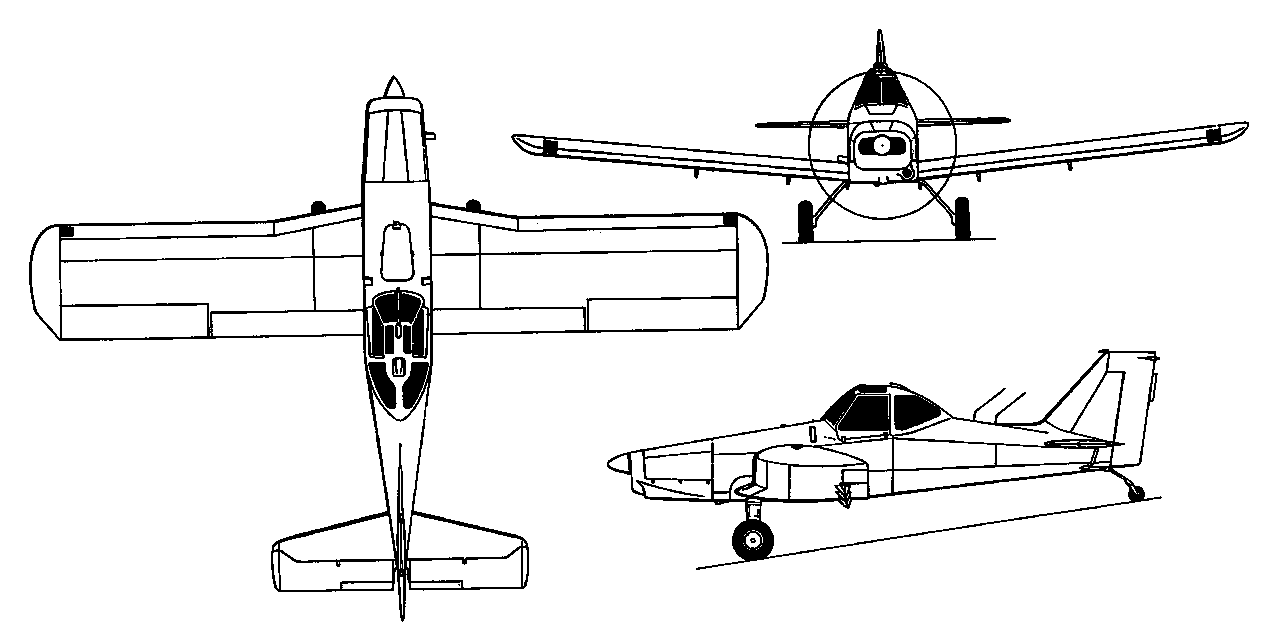
Design and development
The PA-36 was first announced in 1972 as a new version of the PA-25 Pawnee with a more powerful 285 hp Continental Tiara 6-285 flat six engine. The aircraft had a new wing, improved ventilation and heating system, and a larger standard hopper of 30 ft³ (0.85m³). An optional 38 ft³ (1.08 m³) hopper was also available. The type entered service in 1973.
In 1977 a new version the PA-36 Pawnee Brave 300 became available with a 300 hp (224 kW) Avco Lycoming IO-540-K1G5 engine. The original aircraft was redesignated the PA-36 Pawnee Brave 285. In 1978 the Pawnee Brave 300 became the standard model and another more powerful model was introduced, the PA-36 Pawnee Brave 375 with a 375 hp (280 kW) Avco Lycoming IO-720-D1CD flat-eight engine. In 1981 Piper sold the rights in the design to WTA Incorporated, who marketed two versions from 1984 as the New Brave 375 and New Brave 400.
Variants
- PA-36-285 Pawnee Brave
- Production version, 938 built.
- PA-36-300 Pawnee Brave 300
- Pawnee Brave with a 300 hp Avco Lycoming IO-540-K1G5 engine.
- PA-36-375 Pawnee Brave 375
- Pawnee Brave with a 375 hp Avco Lycoming IO-720-D1CD engine.
Specifications (Pawnee Brave 300)
General characteristics
- Crew: 1
- Length: 27 ft 4¼ in (8.34 m)
- Wingspan: 39 ft 0 in (11.89 m)
- Height: 7 ft 6 in (2.29 m)
- Wing area: 225.65 ft² (20.96 m²)
- Empty weight: 2,180 lb (989 kg)
- Max takeoff weight: 4,400 lb (1996 kg)
- Powerplant: 1× Avco Lycoming IO-540-K1G5 flat-six piston, 300 hp (224 kW)
Performance
- Maximum speed: 142 mph (229 km/h)
- Range: 460 miles (740 km)
- Service ceiling 6,400 ft (1950 m)
Source: Wikipedia


No comments:
Post a Comment